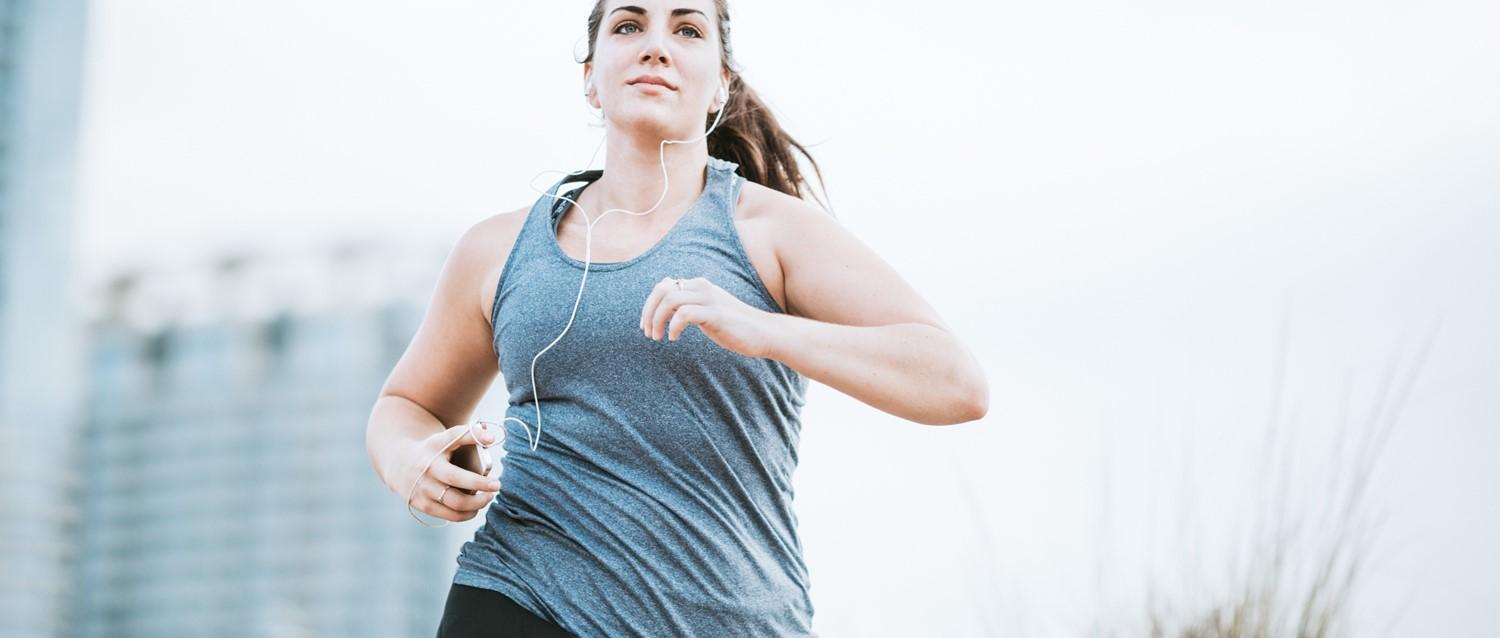
Vídeo: Ejercicios para el dolor de cadera
Revisado por la Dra. Sarah Jarvis MBE, FRCGPÚltima actualización por Lilly Sabri, MHPCÚltima actualización: 15 de diciembre de 2017
Satisface las necesidades del paciente directrices editoriales
- DescargarDescargar
- Compartir
- Idioma
- Debate
Hip injuries are common in all age groups. The most common cause of chronic (long-standing) hip pain in adults is osteoarthritis.
Because the hip is such a complex joint, hip pain can be caused by many different things including: muscular injuries; ligament injuries; bursa injuries; cartilage tears; bone problems; fractures; reduced blood flow to the hip joint; or infection.
En este artículo:
A common cause of hip pain is poor biomechanics - this is the body's movement patterns when completing daily activities such as walking. The following exercises are recommended to help reduce pain, increase range of movement and strengthen the muscles around the hip joint to prevent future problems.
Playlist: Hip Pain Exercises
3 vídeos
Hip Pain - Range of Movement
Lilly Sabri, MHPC
Hip Pain - Range of Movement
Lilly Sabri, MHPC

Hip Pain - Core Muscle
Lilly Sabri, MHPC

Hip Pain - Inner Thigh Stretch
Lilly Sabri, MHPC
Should your pain increase while completing the exercises, stop immediately and seek advice from your doctor. Should your symptoms not ease after two weeks of completing these exercises, a physiotherapy assessment may be required.
Una vez controlados los síntomas, merece la pena acostumbrarse a hacerlos una o dos veces al día para reducir el riesgo de que reaparezcan.
Seguir leyendo
Ejercicios de amplitud de movimiento
Lower back rotations
Túmbate boca arriba con las rodillas flexionadas.
Relaje los brazos alejándolos del cuerpo con las palmas hacia arriba.
Coloca una almohada entre las rodillas.
Gira ambas piernas en una dirección, mientras giras la cabeza en la dirección opuesta.
Mantenga esta posición durante 10 segundos y repítala 10 veces, dos veces al día.
Abrazos de rodilla a una pierna
Túmbate boca arriba y abraza una rodilla contra el pecho.
Mantén la pierna contraria estirada o flexiónala si esta posición agrava tu dolor de espalda.
Mantenga esta posición durante 10 segundos y repítala 10 veces, dos veces al día.
Single leg rotations
Túmbate boca arriba y abraza una rodilla contra el pecho.
Hold on to knee with one hand and draw small circles with the hip, increasing the size of the circles as you feel the hip loosen.
Complete for 30 seconds in each direction, twice daily.
Stretches for the muscles of the hip joint
Lower back rotation stretch
Túmbate boca arriba con las rodillas flexionadas.
Relaja los brazos alejándolos del cuerpo con las palmas hacia arriba.
Con la cara interna de los muslos tocándose, deja caer ambas piernas en una dirección, girando la cabeza en la dirección opuesta.
Aumente unos centímetros la altura de la parte superior de la rodilla.
Con la mano opuesta a la rodilla, aplique una ligera presión hacia abajo en la parte superior de la rodilla para aumentar el estiramiento en la parte inferior de la espalda.
Mantenga el estiramiento durante 20 segundos; repita tres veces en cada lado, dos veces al día.
Hip flexor stretch
Start in a kneeling position.
Bring your right leg forward while keeping the left knee on the floor behind.
Place your hands on to your right thigh for support.
Lean your body weight forward to feel a stretch in the left hip flexor (the top of the quad muscle).
To increase this stretch, lean your body weight further forward.
Mantenga el estiramiento durante 20 segundos; repita tres veces en cada lado, dos veces al día.
Inner thigh stretch
Lie on your back with your knees bent, feet flat on the floor.
Slowly drop the knees outwards as far as you feel comfortable, feeling a stretch in your inner thigh muscles (adductors).
Once the stretch feeling eases off, you can gently apply a downward pressure to the inner thighs with your hands to increase the stretch.
Mantenga el estiramiento durante 20 segundos; repítalo tres veces, dos veces al día.
Gluteal muscle (glute) stretch
Túmbate boca arriba con las rodillas flexionadas.
Hook the right ankle over the left knee.
Place your hands around the back of the left thigh.
Pull your left leg in towards your chest, feeling a deep stretch in the right buttock (glute) muscle.
Mantenga el estiramiento durante 20 segundos; repita tres veces en cada lado, dos veces al día.
Estiramiento de isquiotibiales
Túmbate boca arriba con las rodillas flexionadas.
Interlock the fingers behind one of your thighs.
Hug that leg towards the chest, stopping at 90°.
Straighten the knee as far as you feel comfortable, feeling a stretch in the hamstring muscle - the big muscle at the back of the thigh.
Mantenga el estiramiento durante 20 segundos; repita tres veces en cada lado, dos veces al día.
To increase this stretch, walk your hands up towards your foot.
Mantenga el estiramiento durante 20 segundos; repita tres veces en cada lado, dos veces al día.
Seguir leyendo
Strengthening for the hip, glute and core muscles
Deep core muscle activation (transverus abdominus)
Firstly, you need to find neutral spine by completing the following:
Túmbate boca arriba con las rodillas flexionadas.
Practise tilting your pelvis backwards and forwards to flatten the back into the floor (posterior tilt) and forward (anterior pelvic tilt).
Repeat 10 times in each direction, keeping the movements slow and controlled.
Find neutral spine, which is the point in the middle.
In neutral spine practise activating the lower core muscles, which are the deep abdominal muscles, located low down where your underwear line would normally sit.
These muscles are active when you cough and laugh but are more difficult to activate consciously.
A good visualisation technique is to draw the lower abdominal muscles in as if trying to fit into a tight pair of trousers.
Single leg stretch
Lie with the lower back in imprint (flat to the floor).
Lift one leg up at a time to tabletop position (90° position - a right angle at the knee and the hip).
With both legs up, keep one leg completely still as the other leg drops to tap the toes on the floor
Slowly draw back to the start position
Continue this movement alternating legs
Complete 10 repetitions on each side, twice daily
To simplify this exercise, complete as above but with one leg up in tabletop, as the other leg is down - knee bent and foot on the floor. Complete 10 repetitions on one side; then repeat on the other, twice daily.
Single leg hip openers
Túmbate boca arriba con las rodillas flexionadas.
Bring the right leg up to single leg table top (90° at the knee and hip).
Keeping the left leg as still as possible: slowly and controlled, drop the right knee outwards, using the deep core muscles to control the movement.
Stop as soon as you feel movement coming from the lower back rather than the hip; then draw the knee back to neutral, maintaining the 90° shape in the leg.
Complete 10 repetitions on each side, twice daily.
Side work series - glute muscles to support the hip
Ejercicio con almejas
Lie on your side with your knees bent, your ankles and knees touching.
Intente crear un pequeño hueco bajo la cintura metiendo los músculos del estómago hacia dentro y activando los músculos centrales.
While keeping your feet together, open your knees apart in a slow and controlled movement before closing them together again.
Complete 20 repetitions on each side, twice daily.
Be careful to avoid your hips rolling and falling out of correct form. Keep the hips facing forwards by pretending you have a full glass resting on your upper hip.
Para aumentar la dificultad de este ejercicio, sube los pies a un taburete imaginario, manteniendo las rodillas en el suelo, y repite el ejercicio de la almeja.
Side leg lift
Lie on your side with both legs straight.
To avoid lower back strain, check that the lower back is not in extension by making sure you can see your toes when you look down.
Intente crear un pequeño hueco bajo la cintura metiendo los músculos del estómago hacia dentro y activando los músculos centrales.
Place one hand under your head for support and the other in front of you for balance.
With the foot flexed, lift the upper leg away from the underneath and slowly lower back down.
Complete 10 repetitions on each side, twice daily.
To increase the difficulty of this exercise, raise both legs off the floor and repeat the side leg lift exercise.
Seguir leyendo
Glúteos máximos para apoyar la zona lumbar
Patadas de burro
On all fours, with your hands directly under your shoulders and knees under hips.
Complete four cat/camel stretches before finding neutral spine. Neutral spine is the point in the middle of cat and camel where your back is flat and you can balance an imaginary tray of drinks on your lower back.
Pull your core and stomach muscle in before shifting your body weight on to your left side and lifting your right leg up to 90° at the knee and hip if able.
Con el pie derecho flexionado, bombea la pierna hacia el techo, dirigiéndola con el talón derecho. Sube y baja unos centímetros con la pierna para completar el ejercicio de patada de burro.
Completa 20 repeticiones en cada pierna, dos veces al día.
Selecciones de pacientes para Ejercicio y actividad física

Vida sana
Cómo superar el miedo al ejercicio
The benefits of physical activity are well known. In the short term, doing some exercise can improve your mood and help you sleep better, as well as giving you a sense of accomplishment. Over the longer term, it can lower your risk of many chronic diseases, help keep your weight under control and strengthen your muscles and bones.
por Abi Millar

Vida sana
Cómo hacer ejercicio en una ola de calor
Cuando hace calor y hay humedad, correr por las mañanas puede parecer una tortura, y es preferible tomar un helado a la sombra que ir al gimnasio. Entonces, ¿cómo puedes mantener tu rutina de ejercicio cuando hace calor?
por Lydia Smith
Seguir leyendo
Historia del artículo
La información de esta página ha sido revisada por médicos cualificados.
15 Dic 2017 | Última versión

Pregunte, comparta, conecte.
Explore debates, formule preguntas y comparta experiencias sobre cientos de temas de salud.

¿Se encuentra mal?
Evalúe sus síntomas en línea de forma gratuita
Sign up to the Patient newsletter
Your weekly dose of clear, trustworthy health advice - written to help you feel informed, confident and in control.
By subscribing you accept our Privacy Policy. You can unsubscribe at any time. We never sell your data.